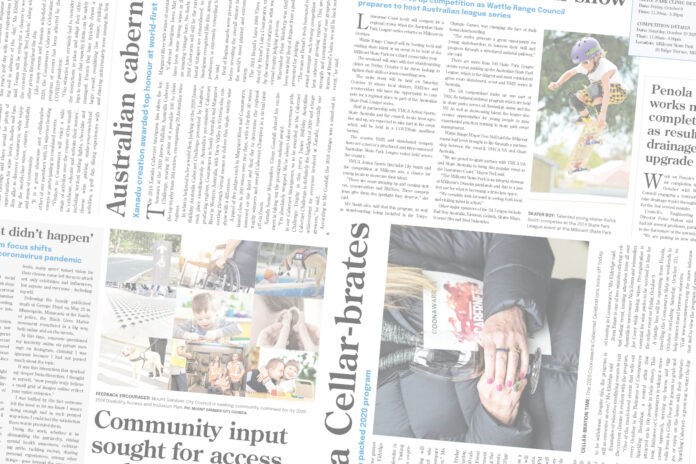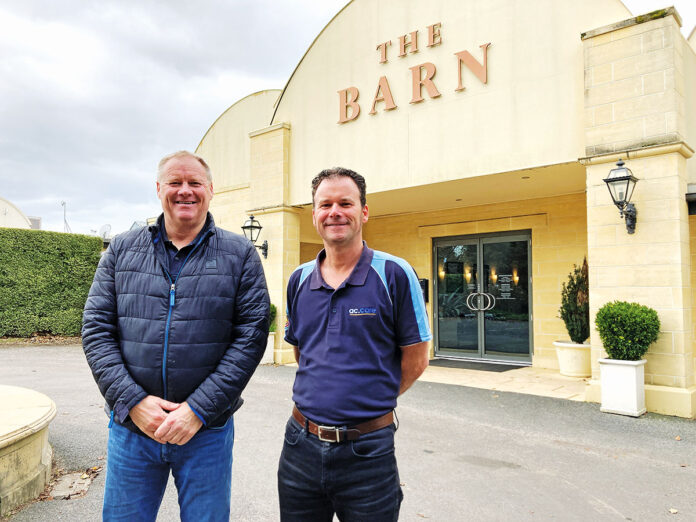1Stop Paediatric Services Mount Gambier is encouraging all parents to have their babies’ hips checked via an ultrasound test.
Although a doctor or midwife checks if a babies’ hips are in position soon after birth, an ultrasound accurately measures and records the hip movement, which can prevent lifelong hip issues and complications.
Paediatric physiotherapist Dr Sue Charlton said in many other countries all babies have the ultrasound test done and recorded, which provides a lifetime record of a baby’s hips.
“We know the infant hip is still in the early stage of developing at birth,” Dr Sue Charlton said.
“Good development depends on the way the joint between the thigh and the pelvis grow to fit each other.
“If there is excessive laxity in the joint the hip will develop with excess movement and may cause problems in development or later in life.
“We know the hip socket is shaped like a saucer at birth and becomes more cup shaped when the head of the femur (thigh bone) is firmly sitting in that socket.
“If the head of the femur is moving around too much that is going to make the socket wider, and it may cause more pain, wear and tear in the hip joint as we age.”
Flinders University conducted a study in Mount Gambier doing neonatal hip scans for any baby whose parents wished to attend.
A significant number of parents attended who wanted to have their babies examined, however when the study was completed, it was discontinued because it was not considered usual practice.
“When we were unable to continue the service to parents at the hospital, it was decided to offer neonatal hip checks at 1 Stop Paediatric Service Mount Gambier for any parent who wished to bring their baby in the first two weeks after birth.
“The ultrasound scans are done by a sonographer and a physiotherapist with records given to the parents to discuss with their family doctor at the post-natal visit.
“Through these scans, we can identify hips that have too much movement in the first two weeks after birth.
“We can give parents some guidance about positioning the hip to keep the head of the femur and the socket of the hip in optimum position, so the hip should develop much more closely.”
During the ultrasound, parents can see their babies’ hip development on the screen and learn the importance of good hip development.
More than 360 babies have visited the clinic and over 100 of these had some extent of family history, either history of family developmental dysplasia of the hip, early hip replacement in a family member or other hip issues.
Of these, 17% had a measurement of 3.5mm or more and 39% of these babies had a hip splint fitted, however the service is currently sought after by a high number of parents with at-risk babies.
In 27% of babies, parents were asked to follow up with more detailed scans at the hospital, and these babies would have been requested to have a Graf ultrasound at six weeks as protocol.
Knowing the status of the hips from just after birth gave parents opportunity to manage them correctly from the start.
“Only 5% of all babies examined have been treated in a hip splint since 2019,” Dr Charlton said.
Dr Charlton said disposable nappies and wrapping babies too tightly could contribute to hip issues as this could cause baby’s legs to stay close together.
The clinic has done lots of education about not wrapping baby’s legs tightly and gets parents to fold a hand towel between baby’s legs before wrapping them.
Babies also have their feet and head shape checked during their visit and parents are advised about ways to introduce tummy time.
“The skills of crawling and walking come more easily from babies spending more awake time on their tummy,” Dr Charlton said.
“On their backs, babies do not have enough muscle power to raise their heads against gravity.
“When lying on their tummy, they have more incentive to try and lift their head and see other things.
“They also learn to transfer their weight, to roll and how to sit up.
“We see older babies who are quite stuck in their development, they have never learned to roll because they have never become used to tummy time.
“Baby development is such an amazing thing.
“Understanding what a child is learning and building on when they are ‘just playing’ is a privilege and a joy.”




